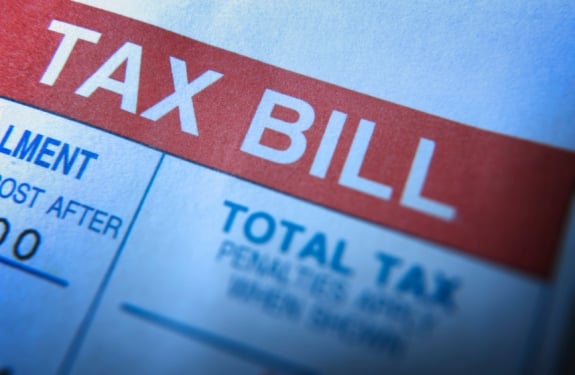Think tank projects tax hike of $3,500 per household
If the president and Congress fail to act and allow virtually every tax cut enacted since 2001 to expire at the end of this year, the so-called “fiscal cliff” would boost taxes by an unprecedented $500 billion—or almost $3,500 per household—in 2013, according to a new analysis released Monday by the Tax Policy Center, a joint venture of the Urban Institute and Brookings Institution in Washington. Although the changes would reduce the federal deficit significantly, they could also push the country back into recession next year, the report warned.
“Almost 90% of Americans would see their taxes rise if we topple off the fiscal cliff,” said Donald Marron, the Director of the Urban Institute who previously served as a member of the President's Council of Economic Advisers, as acting director of the Congressional Budget Office, and as executive director of Congress's Joint Economic Committee. For most households, the two biggest increases would be the expiration of the temporary 2 percentage point cut in Social Security taxes, raising the employee share of payroll taxes from 4.2% to 6.2% next year, and the expiration of the Bush-era income tax rate cuts enacted in 2001 and 2003.
In addition, high-income households would be hit hard by higher tax rates on ordinary income, capital gains, and dividends and by the new health reform taxes. And without what has become an annual patch to increase the exclusion level for the Alternative Minimum Tax, an additional 20 million middle- and upper-income Americans will be snared by the parallel tax system that does not allow personal exemptions and many common itemized deductions. The estate tax would hit more than ten times as many estates as in 2012.
“Taken together, the scheduled changes would significantly increase the marginal tax rates that can influence behavior,” the report said, noting that marginal tax rates would increase by 5 percentage points on wages, 7 percentage point on capital gains and more than 20 percentage points on dividends.
Lawmakers could soften the near-term hit on the economy by delaying or repealing provisions in the so-called fiscal cliff or by enacting other spending and tax policies. But with Congress on recess until after the November elections, time is running short to act before the end of the year. “If investors believe it will actually happen, the pending increase in capital gains tax rate could induce them to sell appreciated stocks, bonds and other assets before the end of 2012,” the report said, just as occurred in 1986 before major tax reform legislation took effect.
To refresh your memory, here are some of the main reasons taxes will rise in 2013 unless scheduled changes are delayed or repealed:
--Expiration of the Bush-era tax cuts would increase tax rates on most ordinary income as the elimination of the 10% tax bracket would raise tax liability for virtually everyone and rate increases for the top four tax brackets would boost tax bills for high-income households.
--Married couples would generally pay more tax resulting from a reinstatement of the “marriage penalty” because their 15% tax bracket would narrow and their standard deduction would be lower.
--Families with children would see their child tax credit cut in half from $1,000 to $500.
--High-income taxpayers would pay more tax as limitations on itemized deductions and personal exemptions would reappear.
--Taxes on long-term capital gains on profits from the sale of assets held more than one year would increase from the current maximum rate of 15% to 20%.
--Qualified dividends, currently taxed at the maximum capital gains rate of 15%, would be taxed as ordinary income rates as high as 39.6% once the Bush tax cuts expire.
--The Affordable Care Act of 2010 imposed new taxes to help finance new healthcare provisions. Starting in 2013, high-income taxpayers will pay an additional 0.9% on their earnings above certain thresholds--$250,000 for married couples and $200,000 for others--raising the combined tax rate that these high-income households and their employers pay on earnings above those thresholds from 2.9% to 3.8%.
--In addition, high-income households will also pay an additional 3.8% tax on capital gains, dividends and interest over those same thresholds.
--The new health care law also increases the adjusted gross income threshold for deducting medical expenses from 7.5% to 10% for all taxpayers younger than 65.
While the overall effect of the combined tax changes would increase by almost $3,500 per household or roughly 5% of pre-tax income, upper income taxpayers would experience the largest tax increases, both in absolute terms and as a percentage of income, according to the Tax Policy Center. The top 15% of taxpayers would see their tax burden rise by slightly more than $14,000 per tax return or almost 6% of pretax income and the top 1% of taxpayers would experience an average tax increase of more than $120,000 or slightly more 7% of their pre-tax income.







